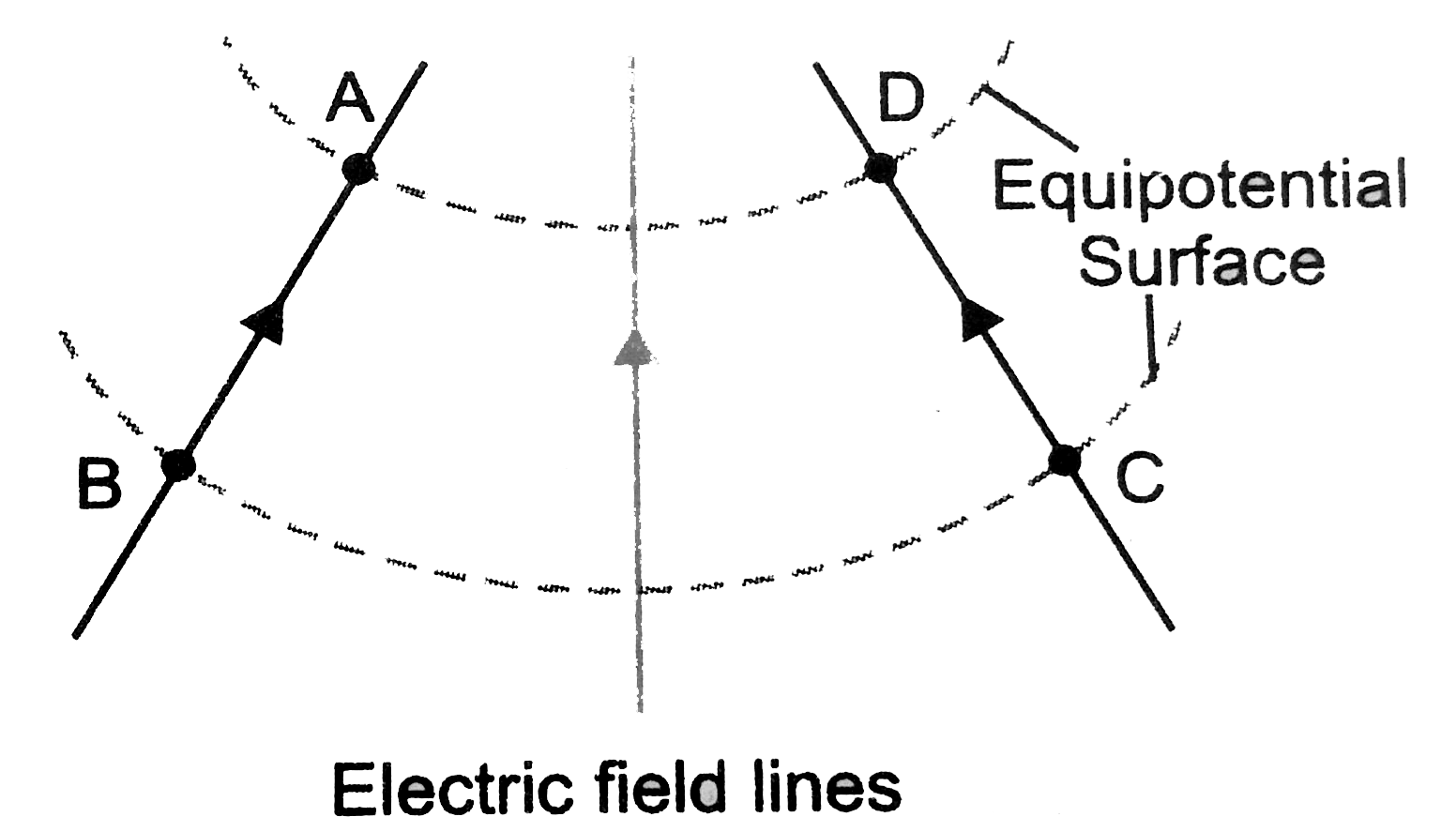When an electron moves from A to B along and electric field line as shown in Fig. the electric field does of work on it. What are the electric potential differences
?

Video Solution
Text Solution
Here,
By definition,
Again,
And, because points B and C lie on the same equipotential surface.
|
Similar Questions
Knowledge Check
In moving from A to B along an electric field line, the work done by the electric field on an electron is 6.4×10−19J. If ϕ1andϕ2 are equipotential surfaces, then the potential difference VC−VA is.
 .A−4VB4VCzeroD6.4V
.A−4VB4VCzeroD6.4VIn figure two points A and B are located in a region of electric field . The potential difference VB−VA is
 APositiveBNegativeCZeroDNone of these
APositiveBNegativeCZeroDNone of these15 joule of work has to be done against an existing electric field to take a charge of 0.01 C from A to B. Then the potential difference (VB−VA) is :-
A1500 voltB−1500 voltC0.15 voltDnone of these
20 J of work has to be done against an existing electric field to take a charge of 0.05 C from A to B. How much is the potential difference VB−VA ?
View SolutionFig (a) and (b) show the field lines of a single positive and negative charges respectively .
Give the signs of the potential difference : VP−VQ,VB−VA

View SolutionA uniform electric field of 30NC−1 exists along the X-axis calculate the potential difference VB−VA between the points A (4m,2m) and B(10m,5m).
View SolutionThe work done in carrying an electron from point A to a point B in an electric is 10 MJ. The potential difference (VB−VA) is then
View SolutionThe work done in carrying a charge of 5μC form a point A to a point B in an electric field is 10mJ. The potential difference (VB−VA) is then
View Solution


